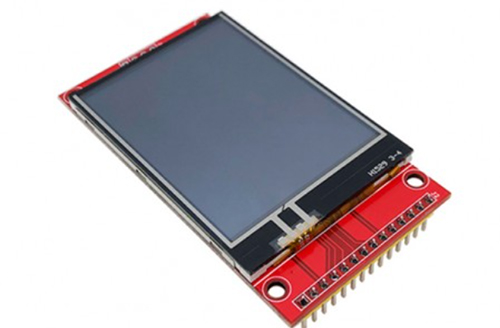What are the different types of LCD panels?
Views: 1163 Update date: Jul 11,2023
Are you curious about the fascinating world of LCD panels? LCD (Liquid Crystal Display) panels are widely used in our everyday lives, from smartphones and tablets to computer monitors and televisions.
1. Twisted Nematic (TN) LCD Panels
Quick Response Time: TN panels are known for their rapid response time, making them ideal for gaming and fast-paced multimedia.
Cost-Effective: These panels are affordable and widely used in budget-friendly monitors.
Limited Viewing Angles: However, TN panels suffer from restricted viewing angles, which means colors may appear distorted when viewed from the sides.
2. In-Plane Switching (IPS) LCD Panels
Superior Color Reproduction: IPS panels offer excellent color accuracy and vibrant visuals, making them popular for professional photo editing, graphic design, and content creation.
Wide Viewing Angles: Unlike TN panels, IPS displays provide consistent colors even when viewed from extreme angles.
Slightly Slower Response Time: IPS panels generally have a slightly slower response time compared to TN panels, which may not be suitable for competitive gaming.
3. Vertical Alignment (VA) LCD Panels
High Contrast Ratios: VA panels excel in producing deep blacks and high contrast ratios, resulting in enhanced image quality and a more immersive viewing experience.
Improved Viewing Angles: VA panels offer wider viewing angles compared to TN panels, but they may not match the wide viewing angles of IPS panels.
Similar to IPS Panels: PLS panels are similar to IPS panels in terms of color reproduction and wide viewing angles. They are often considered Samsung's alternative to IPS technology.
Lower Manufacturing Costs: PLS panels have lower manufacturing costs compared to IPS panels, which can result in more affordable displays.
Varied Availability: However, PLS panels may not be as widely available as IPS panels.
5. Organic Light-Emitting Diode (OLED) Panels
Individual Pixel Illumination: OLED panels consist of individual pixels that emit light, allowing for precise control of brightness and contrast. This technology delivers stunning visuals with true blacks and vibrant colors.
Infinite Contrast Ratios: Due to their ability to turn off individual pixels, OLED panels achieve infinite contrast ratios, resulting in unparalleled picture quality.
Potential for Burn-In: OLED panels are susceptible to burn-in, where static images displayed for extended periods may leave a permanent mark on the screen.
Understanding the different types of LCD panels empowers you to make an informed decision when purchasing a new device. Whether you prioritize gaming performance, color accuracy, or immersive viewing experiences, there is an LCD panel out there tailored to your needs.
RONDELI Main products are Color TFT, capacitive touch screen, resistive touch screen, Monochrome LCD & LCM, character dot matrix .segment LCD cover TN, HTN, STN, FSTN, VA etc, integrating COG, TAB, COB and other techniques. RONDELI products widely used in household appliances, consumer, automotive, education, security, industrial control, medical and intelligent equipment, power equipment, aerospace, military, and many other fields. You are welcome to contact us: sales@rondelidisplay.com
1. Twisted Nematic (TN) LCD Panels
Quick Response Time: TN panels are known for their rapid response time, making them ideal for gaming and fast-paced multimedia.
Cost-Effective: These panels are affordable and widely used in budget-friendly monitors.
Limited Viewing Angles: However, TN panels suffer from restricted viewing angles, which means colors may appear distorted when viewed from the sides.
2. In-Plane Switching (IPS) LCD Panels
Superior Color Reproduction: IPS panels offer excellent color accuracy and vibrant visuals, making them popular for professional photo editing, graphic design, and content creation.
Wide Viewing Angles: Unlike TN panels, IPS displays provide consistent colors even when viewed from extreme angles.
Slightly Slower Response Time: IPS panels generally have a slightly slower response time compared to TN panels, which may not be suitable for competitive gaming.
3. Vertical Alignment (VA) LCD Panels
High Contrast Ratios: VA panels excel in producing deep blacks and high contrast ratios, resulting in enhanced image quality and a more immersive viewing experience.
Improved Viewing Angles: VA panels offer wider viewing angles compared to TN panels, but they may not match the wide viewing angles of IPS panels.
Moderate Response Time: VA panels generally strike a balance between TN and IPS panels when it comes to response time.
Similar to IPS Panels: PLS panels are similar to IPS panels in terms of color reproduction and wide viewing angles. They are often considered Samsung's alternative to IPS technology.
Lower Manufacturing Costs: PLS panels have lower manufacturing costs compared to IPS panels, which can result in more affordable displays.
Varied Availability: However, PLS panels may not be as widely available as IPS panels.
5. Organic Light-Emitting Diode (OLED) Panels
Individual Pixel Illumination: OLED panels consist of individual pixels that emit light, allowing for precise control of brightness and contrast. This technology delivers stunning visuals with true blacks and vibrant colors.
Infinite Contrast Ratios: Due to their ability to turn off individual pixels, OLED panels achieve infinite contrast ratios, resulting in unparalleled picture quality.
Potential for Burn-In: OLED panels are susceptible to burn-in, where static images displayed for extended periods may leave a permanent mark on the screen.
Understanding the different types of LCD panels empowers you to make an informed decision when purchasing a new device. Whether you prioritize gaming performance, color accuracy, or immersive viewing experiences, there is an LCD panel out there tailored to your needs.
RONDELI Main products are Color TFT, capacitive touch screen, resistive touch screen, Monochrome LCD & LCM, character dot matrix .segment LCD cover TN, HTN, STN, FSTN, VA etc, integrating COG, TAB, COB and other techniques. RONDELI products widely used in household appliances, consumer, automotive, education, security, industrial control, medical and intelligent equipment, power equipment, aerospace, military, and many other fields. You are welcome to contact us: sales@rondelidisplay.com




